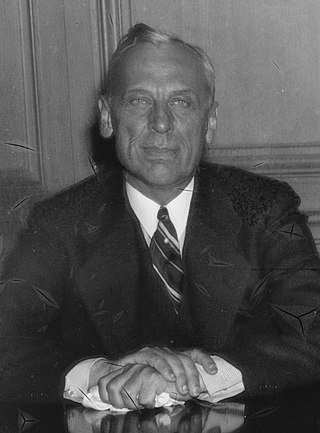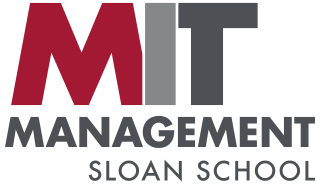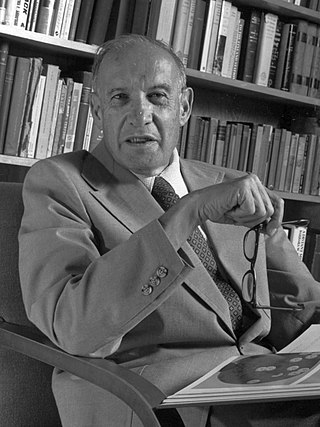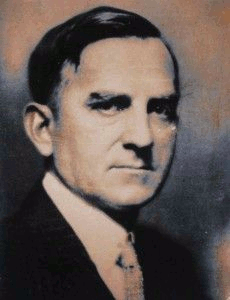Related Research Articles

General Motors Company (GM) is an American multinational automotive manufacturing company headquartered in Detroit, Michigan, United States. The company is most known for owning and manufacturing its four core automobile brands of Chevrolet, GMC, Cadillac and Buick. By sales, it was the largest automaker in the United States in 2022, and was the largest in the world for 77 years before losing the top spot to Toyota in 2008.

All the President's Men is a 1974 non-fiction book by Carl Bernstein and Bob Woodward, two of the journalists who investigated the June 1972 break-in at the Watergate Office Building and the resultant political scandal for The Washington Post. The book chronicles the investigative reporting of Woodward and Bernstein from Woodward's initial report on the Watergate break-in through the resignations of Nixon Administration officials H. R. Haldeman and John Ehrlichman in April 1973, and the revelation of the Oval Office Watergate tapes by Alexander Butterfield three months later. It relates the events behind the major stories the duo wrote for the Post, naming some sources who had previously refused to be identified for their initial articles, notably Hugh Sloan. It also gives detailed accounts of Woodward's secret meetings with his source Deep Throat, whose identity was kept hidden for over 30 years. Gene Roberts, the former executive editor of The Philadelphia Inquirer and former managing editor of The New York Times, has called the work of Woodward and Bernstein "maybe the single greatest reporting effort of all time."

Alfred Pritchard Sloan Jr. was an American business executive in the automotive industry. He was a long-time president, chairman and CEO of General Motors Corporation. Sloan, first as a senior executive and later as the head of the organization, helped GM grow from the 1920s through the 1950s, decades when concepts such as the annual model change, brand architecture, industrial engineering, automotive design (styling), and planned obsolescence transformed the industry, and when the industry changed lifestyles and the built environment in America and throughout the world.

The MIT Sloan School of Management is the business school of the Massachusetts Institute of Technology, a private university in Cambridge, Massachusetts. MIT Sloan offers bachelor's, master's, and doctoral degree programs, as well as executive education. Its degree programs are among the most selective in the world. MIT Sloan emphasizes innovation in practice and research. Many influential ideas in management and finance originated at the school, including the Black–Scholes model, the Solow–Swan model, the random walk hypothesis, the binomial options pricing model, and the field of system dynamics. The faculty has included numerous Nobel laureates in economics and John Bates Clark Medal winners.

Peter Ferdinand Drucker was an Austrian American management consultant, educator, and author, whose writings contributed to the philosophical and practical foundations of modern management theory. He was also a leader in the development of management education, and invented the concepts known as management by objectives and self-control, and he has been described as "the founder of modern management".

Charles Franklin Kettering sometimes known as Charles Fredrick Kettering was an American inventor, engineer, businessman, and the holder of 186 patents. He was a founder of Delco, and was head of research at General Motors from 1920 to 1947. Among his most widely used automotive developments were the electrical starting motor and leaded gasoline. In association with the DuPont Chemical Company, he was also responsible for the invention of Freon refrigerant for refrigeration and air conditioning systems. At DuPont he also was responsible for the development of Duco lacquers and enamels, the first practical colored paints for mass-produced automobiles. While working with the Dayton-Wright Company he developed the "Bug" aerial torpedo, considered the world's first aerial missile. He led the advancement of practical, lightweight two-stroke diesel engines, revolutionizing the locomotive and heavy equipment industries. In 1927, he founded the Kettering Foundation, a non-partisan research foundation, and was featured on the cover of Time magazine in January 1933.

William Crapo Durant was a leading pioneer of the United States automobile industry and co-founder of General Motors and Chevrolet. He created a system in which a company held multiple marques – each seemingly independent, with different automobile lines – bound under a unified corporate holding company. Durant, along with Frederic L. Smith, co-founded General Motors, as well as Chevrolet with Louis Chevrolet. He also founded Frigidaire.

Henry Martyn Leland was an American machinist, inventor, engineer, and automotive entrepreneur. He founded the two premier American luxury automotive marques, Cadillac and Lincoln.
Harley Jarvis Earl was an American automotive designer and business executive. He was the initial designated head of design at General Motors, later becoming vice president, the first top executive ever appointed in design of a major corporation in American history. He was an industrial designer and a pioneer of modern transportation design. A coachbuilder by trade, Earl pioneered the use of freeform sketching and hand sculpted clay models as automotive design techniques. He subsequently introduced the "concept car" as both a tool for the design process and a clever marketing device.

Pierre Samuel du Pont was an American entrepreneur, businessman, philanthropist and member of the prominent du Pont family.

John Jakob Raskob, KCSG was a financial executive and businessman for DuPont and General Motors, and the builder of the Empire State Building. He was chairman of the Democratic National Committee from 1928 to 1932 and a key supporter of Alfred E. Smith's candidacy for President of the United States.
Herbert Solow was an American journalist and co-editor of the Menorah Journal who was first a Communist fellow-traveler in the 1920s, a Trotskyist in the 1930s, and then abandoned leftist politics to work in Henry Luce's publishing empire as Fortune editor.

Concept of the Corporation (1946) is a book by management professor and sociologist Peter Drucker.

In the late 1920s, American automotive company General Motors (GM) launched four companion makes to supplement its existing lineup of five-passenger car brands, or makes. The companion makes were LaSalle, introduced for the 1927 model year to supplement Cadillac; Marquette, introduced in 1929 for 1930 to supplement Buick; Pontiac, introduced for 1926 to supplement Oakland; and Viking, introduced for 1929 to supplement Oldsmobile. GM's fifth existing brand, Chevrolet, did not receive a companion make. With the exception of Viking, each of the companion makes were slotted below their "parent make" in GM's pricing hierarchy.

The history of General Motors (GM), one of the world's largest car and truck manufacturers, dates back more than a century and involves a vast scope of industrial activity around the world, mostly focused on motorized transportation and the engineering and manufacturing that make it possible. Founded in 1908 as a holding company in Flint, Michigan, as of 2012 it employed approximately 209,000 people around the world. With global headquarters at the Renaissance Center in Detroit, Michigan, United States, General Motors manufactures cars and trucks in 35 countries. In 2008, 8.35 million GM cars and trucks were sold globally under various brands. Current auto brands are Buick, Cadillac, Chevrolet, GMC, Baojun, and Wuling. Former GM automotive brands include LaSalle, McLaughlin, Oakland, Oldsmobile, Opel, Pontiac, Hummer, Saab, Saturn, Vauxhall, Daewoo, and Holden.

John Lee Pratt was an American industrialist born on the county line of Stafford and King George County, Virginia. He received an engineering degree from the University of Virginia, entered the ranks of American business executives in two major U.S. corporations, and later purchased and helped preserve historic Chatham Manor in Stafford County, Virginia which, upon his death, he gave to the National Park Service.
Robert Chesley Osborn (1904–1994) was an American satiric cartoonist, illustrator and author.
ACDelco is an American automotive parts brand owned by General Motors (GM). Factory parts for vehicles manufactured by GM are consolidated under the ACDelco brand, which also offers aftermarket parts for non-GM vehicles. Over its long history it has been known by various names such as United Motors Corporation, United Motors Service, and United Delco. The brand "ACDelco" should not be confused with GM's former AC Delco Systems, formed in 1994 from the merger of AC Rochester Division and Delco Remy Division. In 1995 Delphi Automotive Systems absorbed AC Delco Systems.
The tool and die strike of 1939, also known as the "strategy strike", was an ultimately successful attempt by the United Auto Workers Union (UAW) to be recognized as the sole representative for General Motors workers. In addition to representation rights, the UAW, working jointly with the Congress of Industrial Organizations (CIO), sought to resolve existing grievances of skilled workers.

Hyatt Roller Bearing Company was a manufacturer of roller bearings from 1892 to 1916, when it was acquired by General Motors. It continued as a distinct division of GM for many years. The company struggled at first, then entered a phase of profitable growth under the leadership of Alfred P. Sloan. The innovative design of Hyatt's roller bearings made them more durable and efficient than others. They were widely used in early automobiles by various manufacturers, and in industrial vehicles and equipment.
References
Notes
- ↑ Johnston, David Cay. "John D. McDonald, 92, Author of a Classic on Business Strategy". nytimes.com. Retrieved 26 November 2023.
- ↑ "Ex-Fortune editor hailed". The Argus . Vol. XIV, no. 182. UPI. October 27, 1976. p. 21. Retrieved February 27, 2019– via Newspapers.com.
Bibliography
- McDonald, John; Seligman, Dan (2003). A ghost's memoir: the making of Alfred P. Sloan's My Years with General Motors. Boston, Massachusetts, US: MIT Press. ISBN 978-0-262-63285-0.
- Sloan, Alfred P. (1964), McDonald, John (ed.), My Years with General Motors, Garden City, NY, US: Doubleday, LCCN 64011306, OCLC 802024.Republished in 1990 with a new introduction by Peter Drucker ( ISBN 978-0385042352).